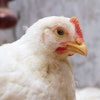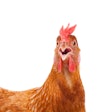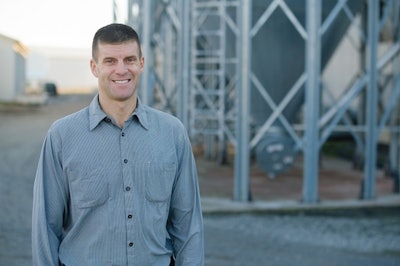
DeWeerdt Poultry Farm, co-owner of the marketing brand Hamilton Eggs LLC, was forced to convert all its operations to cage free by the end of 2024 to stay in the egg business, just in time for implementation of Senate Bill 174, which requires that all eggs produced or sold in Michigan be produced in cage-free houses by January 1, 2025. The timeline has had a financial and logistical impact on farm operations. While the company’s construction plans are progressing, it apparent that the new legislation has forced Steve DeWeerdt, owner of DeWeerdt Poultry Farm, to face challenges along the way.
DeWeerdt worked with Bryant Wiley (Big Dutchman Regional Sales Manager – Commercial Egg Systems) on picking the right aviary for his situation and Mark Doyle (Agricon Buildings Global Vice President) on designing and constructing the houses.
The price to stay in the business was shocking.
“There's nothing you can do about it. I was looking at the borrowing bill (for a house built) in 2008. We paid 46 cents per birds for an entire ventilation package. When you look at the numbers for a ventilation package on a cage-free barn, everything has just gone up astronomically.”
In the past, companies haven’t been forced to build so much in such a short period of time, meaning that the price that consumer’s pay for eggs are expected to increase. “We haven’t built anything on the farm since 2014,” stated DeWeerdt. By the end of Hamilton Eggs’ new construction, it will have three new barns (two steel construction and one wood). Starting at the end of 2023, two of its already existing barns (wood construction) will be remodeled to cage free. “Remodels can get challenging, but we have a plan,” stated Doyle.
One of the previous barns is 10 years old and the other is seven years old, meaning there is a lot of life in them. “I did not feel good about calling the excavator and demolishing being that they were that new,” stated DeWeerdt. “We decided we could probably make those work.”
While DeWeerdt was able to salvage two existing houses, he explained that his two older buildings had to be torn down not only due to cost of remodeling, but their dimensions not being able to accommodate the target flock size and production numbers. “When you look at the costs associated with remodeling (the) older buildings to fit cage-free house standards, it didn’t make sense to save them,” he said.
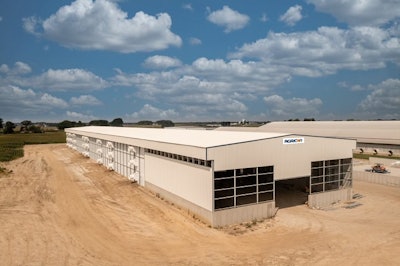
The remodeling
Because cage-free housing is normally wider and taller than caged housing to accommodate for the additional space requirement per bird, different building materials, such as metal, need to be considered, explained Doyle.
Metal trusses are often used in place of wooden trusses and can be increased in thickness and size without affecting the overall structural integrity, making them the more cost-effective option. Caged housing containing approximately 200,000 layers utilizes 12-14’ sidewall structures, while cage-free housing, commonly uses sidewall heights over 30’ for the same or lesser number of layers.
“As sidewalls increase in height, additional wind and lateral pressures must be considered. Once again, limits to wood design are encountered with these sidewall heights,” said Doyle.
While increasing the building widths and heights is necessary for cage-free housing to remain in the same footprint of the previous cage house, it brings changes to the current ventilation design and more financial challenges. Supplemental heat is needed in certain climates due to the lower bird numbers in larger houses.
“While cross or tunnel ventilation designs are similar for warm weather operations, winter and moderate ventilation designs are much more challenging with cage free housing. Air inlets need to be designed per level of bird housing inside the structure,” stated Doyle.
In addition to the standard costs of construction and remodeling, the pandemic has put a strain on the supply chain, making building materials hard to come by and expensive when you’re finally able to get them. However, these issues haven’t stopped Deweerdt from moving forward with his conversion.
The logistics
Although Hamilton Eggs’ new cage-free houses are larger in size, it will have fewer total birds on the farm in 2025 due to the regulation’s space per hen requirements. This means that with the three new barns under construction, and two conversions, determining the footprints for the new houses to meet DeWeerdt’s current production needs was challenging.
The converted houses have Big Dutchman’s NATURA Step XL aviary system. “The Natura STEP XL provides more efficient utilization of space while allowing for wider litter aisles. Visually, there is no question that this is cage free.” stated Wiley.
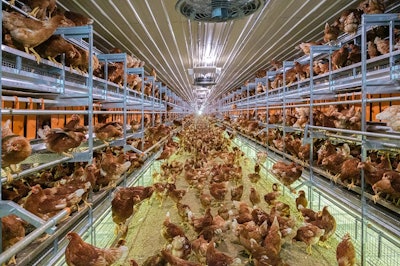
The farm will have approximately 100,000 less birds this spring compared to last spring due to the new aviary style, only having so much land to build on and working within the existing frames of the old houses.
“Because we’re an inline operation and moved from caged flocks as large as 280,000 to cage-free flocks of 100,000, that really hurts production. We saw the benefit to having more flocks, just smaller.” Without acquiring more land to expand on, the only option was to go up, therefore, DeWeerdt’s new barns are three levels high to accommodate flock size and production needs.
“In 2017, we put a new 530 Moba grader in. Prior to that we were running a 330 Moba. The efficiency of this plant increased. If we went down to, for example, 700,000 birds from 1.2 million, the plant becomes extremely inefficient. Our goal was to stay close to the size that we were,” explained DeWeerdt.
On top of coordinating the new construction, DeWeerdt also had to consider the farm’s pullet supplier going cage free. “When we pulled the trigger (on cage free) our pullet grower did not have cage-free pullets available for the dates we requested, so the first two flocks came from someone else,” he said. “He’s (the pullet grower) also got cages he’s taking out to make his building cage free.”
This means there was a time frame in which the grower could not supply pullets. Additionally, DeWeerdt mentioned that they picked the size of their cage-free construction according to how many birds the pullet grower could supply to them (approximately 100,000), which helped lead to the current floor plan.


